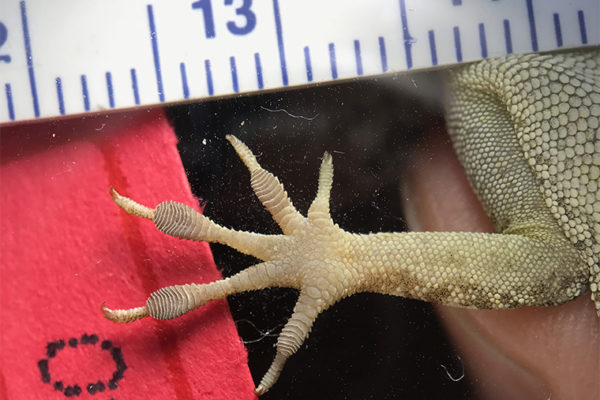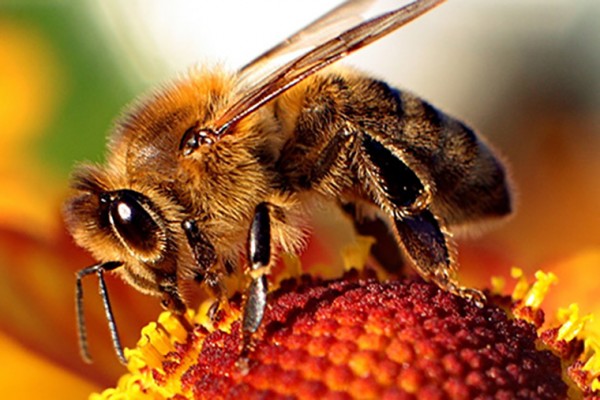Change the bias, change the behavior? Maybe not
In a meta-analysis of published research, psychologist Calvin Lai of Washington University in St. Louis teases out how changes in implicit bias do — and do not — appear to lead to changes in behavior. And why that might be.
Leggy lizards don’t survive the storm
Biologists at Washington University in St. Louis have published a first-of-its-kind look at the physical characteristics of lizards that seem to make the difference between life and death in a hurricane, as reported July 25 in the journal Nature.
Carrot or stick? Punishments may guide behavior more effectively than rewards
When it comes to rewards and punishments, which is more effective — the carrot or the stick? Researchers at Washington University in St. Louis have devised a simple experiment to test the effects of rewards and punishments on behavior and have found that punishments seem to be more effective at influencing behavior.
Manganese speeds up honey bees
The industrial metal manganese, once scarce, is now ubiquitous in our environment. New work suggests that it addles honey bees, which often act as sentinel species for environmental contaminants, even at levels considered safe for humans.
Tiny wireless device shines light on mouse brain, generating reward
Using a miniature electronic device implanted in the brain, scientists have tapped into the internal reward system of mice, prodding neurons to release dopamine, a chemical associated with pleasure. This LED light can activate brain cells and may lead to the mapping of circuits involved in sleep, depression and addiction.
Multiple sclerosis research links brain activity to sharper cognitive decline
When it comes to communication in the brain, more is usually better. But now scientists, including Maurizio Corbetta, MD, have linked increased communication in a network of brain regions to more severe mental impairment in patients with early-stage multiple sclerosis (MS).
What is better, the carrot, the stick or both?
The business world runs on agreements. As long as everyone fulfills his or her end of the bargain, things tend to run smoothly. But the question of the most effective way to enforce or regulate these agreements remains. Adam B. Badawi, JD, PhD, associate professor of law at Washington University in St. Louis, looks at this question in the context of franchises. After examining a large number of franchise agreements, Badawi found that despite sometimes allowing contract damage awards against franchisees, the more effective method of enforcing these agreements is often through informal, non-legal rewards system.
Studies affirm relationship between early humans, Neandertals
Joe Angeles/WUSTL PhotoErik Trinkaus, WUSTL professor of anthropology in Arts & Sciences, holding a Neandertal skull, says the evidence is very convincing that Neandertals and early humans mixed.For nearly a century, anthropologists have been debating the relationship of Neandertals to modern humans. Central to the debate is whether Neandertals contributed directly or indirectly to the ancestry of the early modern humans that succeeded them. As this discussion has intensified in the past decades, it has become the central research focus of Erik Trinkaus, Ph.D., professor of anthropology at Washington University in St. Louis. Trinkaus has examined the earliest modern humans in Europe, including specimens in Romania, Czech Republic and France. Those specimens, in Trinkaus’ opinion, have shown obvious Neandertal ancestry.
The psychology of learning
Photo by David KilperLeonard Green plays tough with students and leaves a lasting impression
Early man more wary than war-like, new book asserts
Some species still prey on humans to this day.Early man was more wary than war-like, more intelligent, agile, and cooperative than aggressive, predator or killer, and he co-evolved as the prey of many species. Moreover, in the old days, woman wore the pants in the family and men were basically expendable, not the brightest bulbs on the tree when it came to tools, and functioning best as sentinels wary of predators in edge environments between the forest and savannah. Those are the primary themes of a new book, “Man the Hunted: Primates, Predators and Human Evolution”, co-authored by Robert W. Sussman, Ph.D., professor of anthropology in Arts & Sciences.
View More Stories



